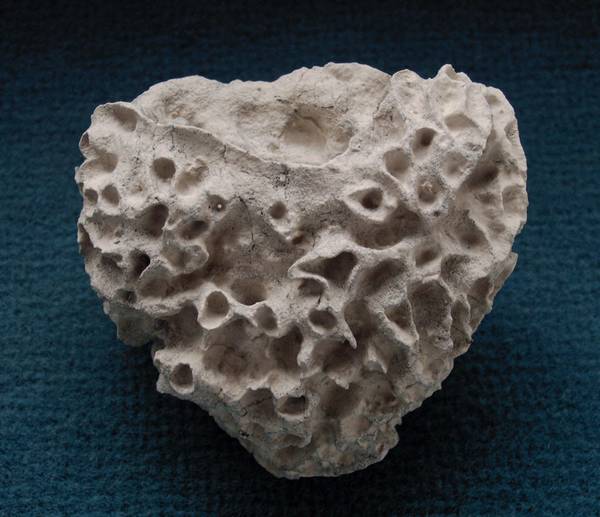
Callicylix farreides
Schrammen 1912
Callicylix farreides has not been reported from Misburg before. It has been described as a rare species from Oberg (near Ilsede, North Germany).
The present specimen of Callicylix farreides has a pear-shaped habit with a wide and deep paragaster. It consists of a thin (1 mm) wall which is generally folded into irregular and anastomosing tubes (4 to 8 mm wide) with cavaedial interspaces, but which is also plane in some areas and at the growth margin. The tubes are open towards the dermal surface, whereas their outside walls form the gastral surface.
The dictional skeleton consists of fused lychnisks which generate a regular meshwork of cubic meshes (3.5 meshes to one mm). The gastral surface consists of the same regular meshworh, whereas the dermal surface is covered by an irregular surface layer, particularly near the base of the sponge. The cortex consists of silica mantled lychnisks, whose outwardly orientd arms are modified into rounded conical protrusions.